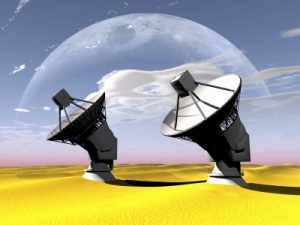
Image Courtesy of Serge Bertasius Photography at FreeDigitalPhotos.net
Vikings in Spppace
“Space Archaeology” (giggle). I love the juxtaposition of outer space with a science closely involved in mud and dust for the gravity-bound.
In early 2016 Sarah Parcak used her special software imagery to discover a possible second Viking landing site in North America. You can read about it here “Did Alabama space archaeologist just help rewrite history of Vikings in North America” (written by Kelsey Stein on April 2, 2016).
You may have seen the information when it first came out. It was a big deal, especially among those interested in human history.
What really caught my attention was not the Vikings in North America, but the full implications of the software. Folks this is BIG!
(As a computer geek, anthropology geek, science fiction geek – all types of geek – I am so geeking this geekdom!)
So let’s start with with the “special software”. Most of us are aware, at least peripherally, archaeologists have been using satellite imagery to comb the planet for digging sites. They have been limited to places with little to no vegetation – desert areas – and sites with large stone structures – pyramids and Roman stone & concrete roads. Basically easy to spot stuff that just happens to be covered in sand. What Dr. Parcak’s software imagery processor has done is shift the paradigm.
The software goes over vegetation areas, the more the better, and looks for something “off”. Straight lines of color, geometric shapes created by differentiation in growth patterns, and other non-organic patterns in the organic materials. The areas are marked on the map and shunted over to human eyes for further review, and finally to human bodies for digging. What forms these vegetative differences? Not huge stone structures, but a dirt wall fortification, long-rotted timbers creating soil differences, and a couple hundred pound rocks moved around. Basically organic materials long claimed by the forest and jungle, but the history remains hundreds of years later because plants grown a tiny bit different in those locations.
Suddenly we can look for human history anywhere on the planet. South America, except for a few ancient stone cities, is a mystery waiting to be revealed. Africa, home of humanity, can be search for in the desert, savanna, and jungle. Huge Asia, from steppes to shore, can be explored. Egyptian and Mediterranean history move over, we are going to see if you are really the cradle of civilization. You got lucky because of the sand and stone clearly wrote your cities locations, now we may find the second-on-the-mother’s side cousin-cities you forgot to write down.
Now the real geeking maximum.
Imagine this software exploring other planets! Before we were limited to industrial markers to find aliens, figuring large roads and cities may be visible from space. But what if the sentient species hasn’t gotten beyond mud huts and stone tools. Would we even notice them before taking over their world?
The answer now is YES! We will find them even if they hide under hundred-mile tall trees.
Discovering a possible second Viking site in North America is nice. But the software which made it possible has some real legs to it; I can’t wait to see what else it does.
